Introduction
In today’s world, where environmental concerns are growing, the concept of zero waste living has gained significant attention. Zero waste living is a lifestyle approach aimed at minimizing household waste by reducing, reusing, and recycling. It goes beyond the traditional idea of waste management and emphasizes the importance of conscious consumption and sustainable practices.
The significance of reducing household waste cannot be overstated. Every year, landfills are burdened with tons of waste that take up space and release harmful greenhouse gases into the atmosphere. By adopting a zero waste lifestyle, individuals can contribute to the preservation of our planet’s resources, mitigate the effects of climate change, and protect the environment for future generations.
In this blog post, we will explore practical tips to help you embrace zero waste living and minimize household waste. These tips are designed to be accessible and easy to implement, regardless of your current lifestyle or living situation. By incorporating these practices into your daily routine, you can make a positive impact and become part of the solution.
Throughout the post, we will delve into various aspects of zero waste living, including waste assessment, recycling and composting, mindful consumption, smart shopping, repurposing, and spreading awareness. Each section will provide actionable steps and guidance to help you transition towards a zero waste lifestyle.
By the end of this blog post, you will have a comprehensive understanding of zero waste living and a toolkit of practical tips to help you reduce household waste. Remember, every small action counts, and together, we can make a significant difference in preserving our planet for future generations.
Assessing Current Waste
Assessing our current waste is an essential step towards embracing a zero waste lifestyle. By taking the time to evaluate the waste we generate in our households, we gain valuable insights into areas where improvements can be made. Conducting a waste audit allows us to identify the types and quantities of waste we produce, enabling us to make informed decisions on how to minimize our environmental impact. In this section, we will explore the importance of conducting a waste audit and how it can guide us towards reducing household waste effectively.
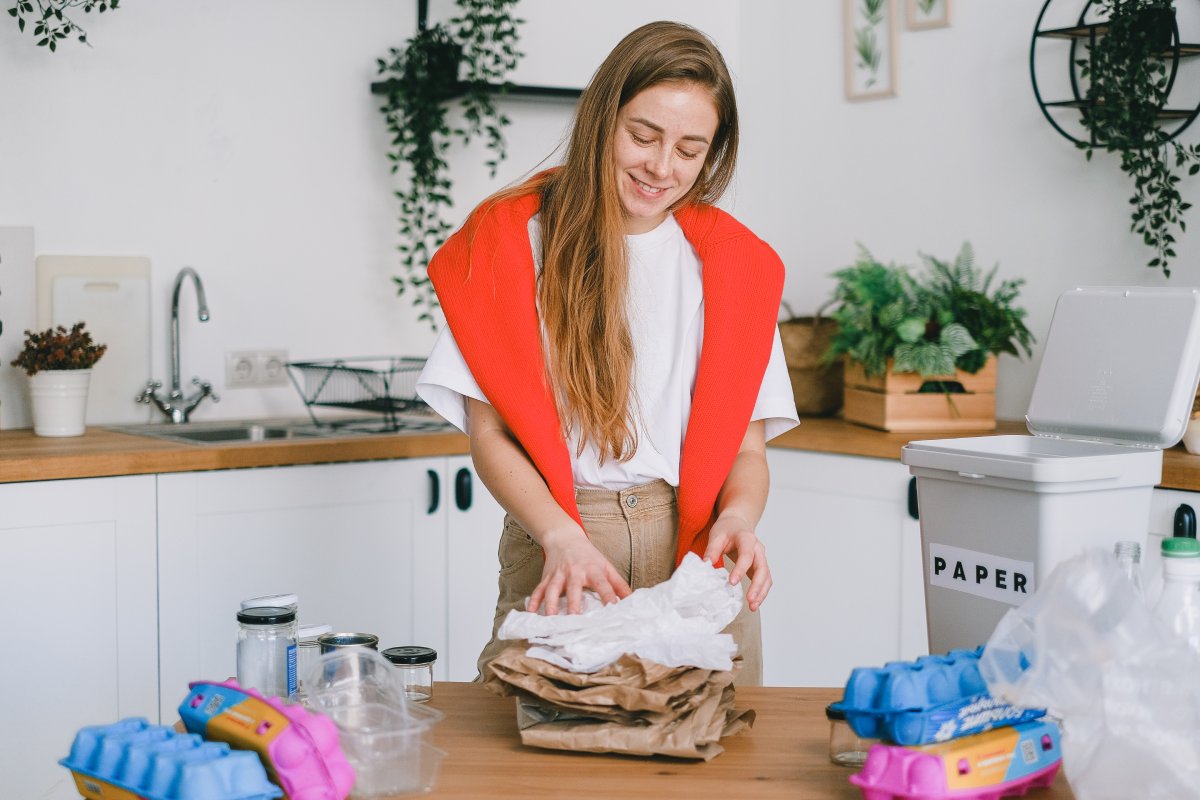
Conducting a Waste Audit
To embark on your zero waste journey and effectively minimize household waste, it’s essential to first assess your current waste generation. This process begins with conducting a waste audit, which involves examining and analyzing the types and quantities of waste you produce. By understanding your waste stream, you can identify areas for improvement and implement targeted strategies to reduce waste effectively.
Start by collecting your waste
Designate a specific area in your home to gather all your waste for a predetermined period, such as a week or a month. This can include all types of waste generated, including food waste, packaging, paper, plastic, and other materials.
Categorize and weigh the waste
Sort the collected waste into different categories to better understand its composition. Common categories include recyclables, non-recyclables, organic waste, and hazardous waste. Weigh each category to get an idea of the relative proportions and quantities.
Analyze your findings
Take a close look at the waste you’ve collected and assess the patterns and trends. Ask yourself the following questions
- What are the main sources of waste in your household?
- Are there specific items or materials that dominate your waste stream?
- Are there any recurring patterns or habits that contribute to waste generation?
- Are there opportunities for waste reduction through recycling, composting, or reuse?
Set goals and prioritize areas for improvement
Based on your waste audit findings, establish specific goals for waste reduction. Identify the areas where you can make the most significant impact and prioritize them. It could be reducing food waste, minimizing packaging waste, or addressing specific sources of excessive waste.
Take action
Armed with the insights from your waste audit, it’s time to implement changes. Consider the following strategies:
-
Source reduction: Explore ways to reduce waste at the source, such as purchasing products with minimal packaging or buying in bulk to minimize single-use packaging.
-
Recycling and composting: Ensure you have an efficient recycling system in place and learn about local recycling guidelines. Set up a composting system for organic waste to divert it from the landfill.
-
Reuse and repurpose: Look for opportunities to reuse items or find alternative purposes for them. Get creative with upcycling projects or consider donating items that are still in good condition.
-
Education and awareness: Share your waste audit experience and the lessons learned with others. Raise awareness about the importance of waste reduction and inspire others to take action.
By conducting a waste audit and understanding your current waste generation, you lay the foundation for effective waste reduction strategies. It empowers you to make informed decisions and implement targeted changes in your daily life. Remember, reducing waste is a journey, and every small step contributes to a more sustainable future.
Identifying Areas of Improvement
Once you have conducted a waste audit to understand your current waste generation, the next step is to identify specific areas for improvement. This process involves analyzing your waste audit findings and pinpointing opportunities to reduce waste and adopt more sustainable practices. By focusing on these areas, you can make targeted changes that have a significant impact on minimizing household waste. Here are some steps to help you identify and address areas of improvement.
Review your waste audit data
Take a close look at the results of your waste audit. Identify the categories of waste that contribute the most to your overall waste stream. Is there a high proportion of packaging waste, food waste, or non-recyclable materials? Understanding the composition of your waste will guide you in targeting the areas that need improvement the most.
Evaluate consumption habits
Examine your consumption patterns and habits that lead to waste generation. Are you buying more than you need? Do you often discard items that could be repaired or repurposed? Consider the following aspects:
-
Shopping habits: Assess how and where you shop. Are you making conscious choices and avoiding products with excessive packaging? Can you prioritize bulk shopping or buying from local markets?
-
Meal planning: Evaluate your meal planning and grocery shopping practices. Are you purchasing perishable items that often go to waste? Can you plan meals more efficiently to reduce food waste?
-
Single-use items: Identify single-use items that are frequently used and discarded in your household. These may include plastic bags, disposable utensils, or paper towels. Look for alternatives that are reusable or opt for sustainable alternatives like cloth bags, bamboo utensils, or washable cleaning cloths.
Set achievable goals
Based on your assessment, set realistic and achievable goals to reduce waste in specific areas. It’s crucial to start small and gradually build momentum. For example, you could aim to reduce food waste by 25% in the next month or commit to eliminating single-use plastic bottles from your household.
Implement waste reduction strategies
Once you have identified the areas for improvement and set goals, it’s time to take action. Consider the following strategies to minimize household waste:
-
Source reduction: Opt for products with minimal packaging or choose package-free alternatives. Buy in bulk to reduce packaging waste.
-
Meal planning and food storage: Plan meals in advance, create shopping lists, and store food properly to avoid spoilage and waste.
-
Reusable alternatives: Replace single-use items with reusable alternatives. Use cloth bags, stainless steel water bottles, and glass containers for food storage.
-
Repair and repurpose: Instead of discarding broken items, explore repair options or repurpose them creatively. Extend the lifespan of your belongings before considering replacements.
-
Share and donate: Consider sharing or donating items that are no longer needed but are still in good condition. This reduces waste and benefits others in need.
Track progress and adjust as needed
Regularly monitor your progress toward waste reduction goals. Keep track of the changes you have implemented and their impact on your waste generation. If certain strategies are not working as expected, be open to adjusting your approach and trying alternative methods.
By identifying areas of improvement and implementing targeted waste reduction strategies, you can make significant progress toward minimizing household waste. Remember, every small change adds up, and your commitment to zero waste living makes a positive impact on the environment and future generations.
Reducing Packaging Waste
Packaging waste is a significant contributor to the waste generated in our households, and by addressing it, we can make significant strides in minimizing our environmental footprint. In this section, we will explore practical tips and strategies for reducing packaging waste, from choosing products with minimal packaging to utilizing reusable containers and bags.
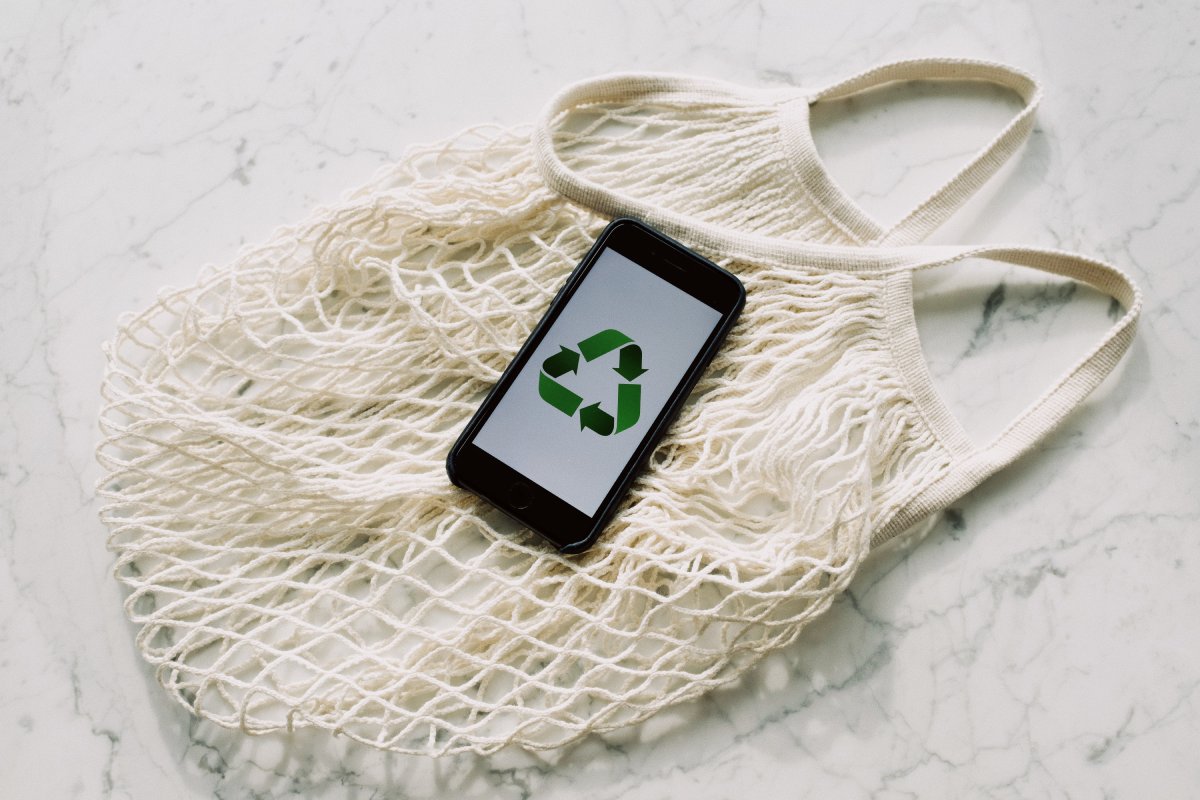
Choosing Products with Minimal Packaging
The excessive packaging used for products can contribute significantly to the waste generated in our households. By making conscious choices and opting for products with minimal packaging, we can minimize our environmental impact and move closer to a zero waste lifestyle. In this section, we will explore practical tips and strategies for selecting products with minimal packaging.
Read labels and packaging information
Before making a purchase, take the time to read the labels and packaging information. Look for products that mention minimal packaging or eco-friendly packaging materials such as recyclable or biodegradable materials. Avoid products with excessive layers of packaging or non-recyclable materials.
Choose bulk options
Buying in bulk is an effective way to reduce packaging waste. Look for stores or markets that offer bulk sections for items such as grains, nuts, spices, and cleaning products. Bring your own reusable containers or bags to fill with the desired quantity. Not only does buying in bulk minimize packaging waste, but it also often saves money in the long run.
Opt for unpackaged or loose produce
When shopping for fruits and vegetables, choose unpackaged or loose options instead of those pre-packaged in plastic or Styrofoam trays. Selecting loose produce allows you to avoid unnecessary packaging waste and gives you the flexibility to choose the exact quantity you need.
Seek out refillable options
Many household items such as cleaning products, personal care items, and pantry staples now offer refillable options. Look for brands or stores that provide refill stations where you can bring your empty containers and refill them with the product of your choice. Refillable options significantly reduce packaging waste and often come in larger quantities, meaning fewer trips to the store.
Support local and sustainable brands
Consider supporting local businesses and sustainable brands that prioritize eco-friendly packaging practices. These brands often use minimal or compostable packaging materials and have a commitment to reducing their environmental impact. By choosing these products, you not only reduce packaging waste but also contribute to a more sustainable economy.
Embrace DIY alternatives
Another effective way to minimize packaging waste is to make your own products whenever possible. By creating DIY alternatives for items like cleaning solutions, personal care products, or even snacks, you can eliminate the need for excessive packaging altogether. There are plenty of recipes and tutorials available online that guide you through making your own zero waste alternatives.
By consciously choosing products with minimal packaging, we can significantly reduce the amount of waste generated in our households. These simple yet impactful choices contribute to a more sustainable lifestyle and pave the way for a zero waste future. Let’s make a difference by embracing a mindful approach to packaging and inspiring others to do the same. Together, we can minimize packaging waste and create a cleaner, healthier environment for ourselves and future generations.
Using Reusable Containers and Bags
One of the most effective ways to reduce packaging waste in our daily lives is by utilizing reusable containers and bags. By opting for these sustainable alternatives, we can significantly minimize the amount of single-use packaging that ends up in our trash bins.
Bring your own shopping bags
When heading out for grocery shopping or running errands, make it a habit to bring your own reusable shopping bags. Keep a stash of reusable bags in your car or by the front door, so you never forget to take them along. By doing so, you can avoid the need for plastic or paper bags provided by stores, contributing to a reduction in waste.
Use reusable produce bags
Instead of reaching for those thin plastic bags provided in the produce section, invest in reusable mesh or cloth bags for your fruits and vegetables. These lightweight bags are durable and washable, allowing you to carry your produce without adding unnecessary plastic waste to your shopping cart.
Pack lunches in reusable containers
When preparing meals for yourself or your family, choose reusable containers for storing and packing food. Opt for glass, stainless steel, or BPA-free plastic containers that can be used repeatedly instead of disposable alternatives. These containers not only help reduce packaging waste but also keep your food fresh and safe.
Carry a reusable water bottle
Plastic water bottles are one of the biggest contributors to packaging waste. By carrying a reusable water bottle with you, you can stay hydrated throughout the day without resorting to single-use plastic bottles. Look for bottles made from durable materials like stainless steel or glass and choose designs that are easy to clean and refill.
Use refillable coffee cups and mugs
If you’re a coffee or tea lover, consider investing in a refillable coffee cup or travel mug. Many cafes and coffee shops now offer discounts for customers who bring their own containers, and some even provide options for compostable or reusable cups. By using your own cup, you can enjoy your favorite hot beverages guilt-free, knowing that you’re reducing waste.
Pack leftovers in reusable containers
Instead of reaching for disposable plastic wrap or aluminum foil to cover leftovers, transfer them to reusable containers for storage. Glass containers with airtight lids are an excellent choice as they are microwave-safe, dishwasher-safe, and keep food fresh for longer. This simple switch eliminates the need for single-use plastic wraps and foils.
Bring your own reusable utensils
Instead of relying on plastic cutlery when eating on the go or ordering takeout, carry your own set of reusable utensils. Invest in a compact, travel-friendly cutlery set made from stainless steel or bamboo. By using your own utensils, you can enjoy meals without contributing to the pile-up of single-use plastic forks, spoons, and knives.
Say no to plastic straws
Plastic straws are a major source of pollution, particularly in marine environments. Avoid using plastic straws altogether or switch to reusable alternatives like stainless steel, glass, or bamboo straws. Many establishments now offer paper straws or even skip providing straws by default. By refusing plastic straws, you can significantly reduce the amount of plastic waste ending up in our ecosystems.
By avoiding single-use items and embracing reusable alternatives, we can significantly reduce packaging waste and contribute to a more sustainable future.
Composting and Food Waste Reduction
In our mission to achieve zero waste living, addressing food waste is paramount. Organic waste, such as food scraps and leftovers, is a significant contributor to household waste. By implementing composting practices and adopting mindful strategies for reducing food waste, we can make a substantial impact on minimizing our environmental footprint.
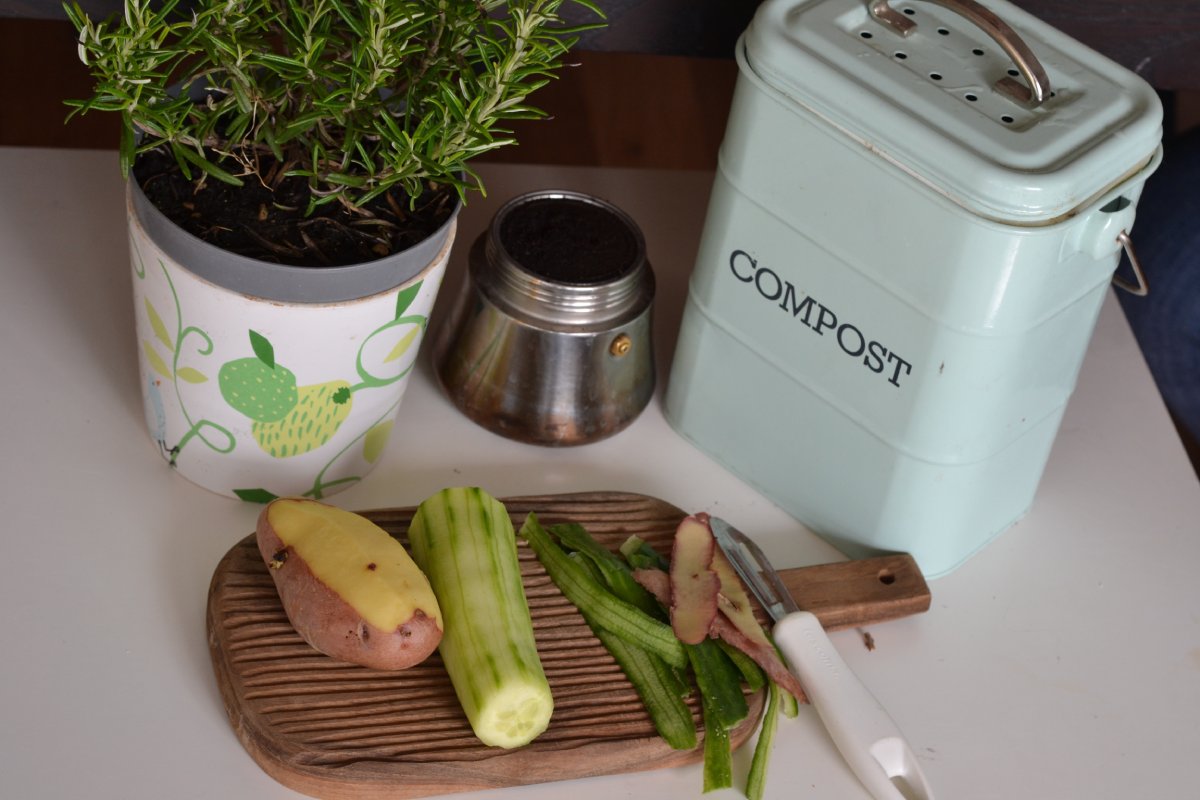
Setting up a composting system
Composting is a natural process that transforms organic materials into nutrient-rich soil. By composting our food scraps, yard waste, and other biodegradable materials, we divert them from landfills and harness their potential to enrich our gardens and plants. Here’s how you can set up your own composting system:
Choose a composting method
There are several composting methods to suit different living situations. If you have a backyard, consider a traditional compost pile or bin. If space is limited, opt for a compact compost tumbler or a vermicomposting system using worms.
Collect compostable materials
Gather food scraps like fruit and vegetable peels, coffee grounds, eggshells, and yard waste such as leaves and grass clippings. Avoid adding meat, dairy, and oily foods, as they can attract pests or slow down the composting process.
Layer and maintain your compost
Alternate layers of green (nitrogen-rich) and brown (carbon-rich) materials to create a balanced compost pile. Green materials include fresh grass clippings and kitchen scraps, while brown materials include dry leaves, twigs, and shredded paper. Keep the compost moist and turn it regularly to aid decomposition.
Harvest and use your compost
Over time, the organic materials will break down into dark, crumbly compost. Harvest it when it resembles rich soil, usually after several months. Use the compost to enrich your garden soil, nourish potted plants, or top-dress your lawn.
Reducing food waste through meal planning and storage techniques
Reducing food waste begins with mindful consumption and smart storage practices. By adopting these strategies, we can minimize food waste and make the most of the resources we have:
Plan meals and create a shopping list
Plan your meals for the week, considering ingredients you already have and those that need to be used before they spoil. Create a shopping list based on your meal plan to avoid overbuying and impulse purchases.
Store food properly
Learn proper storage techniques to keep your food fresh for longer. Utilize airtight containers, reusable wraps, and jars to store leftovers, cut fruits, and vegetables. Label and organize your pantry and fridge to ensure items are visible and accessible, reducing the chances of food getting forgotten and wasted.
Practice portion control
Serve reasonable portion sizes to minimize leftover food. You can always go back for seconds if needed. Freeze excess portions for later use, preventing them from going to waste.
Get creative with leftovers
Repurpose leftovers into new meals to prevent them from going unused. Turn leftover vegetables into stir-fries, soups, or frittatas. Transform stale bread into croutons or breadcrumbs. Embrace your culinary creativity to breathe new life into leftover ingredients.
Preserve excess produce
If you have an abundance of fruits or vegetables, consider preserving them through methods like canning, pickling, or freezing. This allows you to enjoy seasonal produce throughout the year and prevents spoilage.
By implementing composting practices and adopting mindful techniques for reducing food waste, we can make a substantial impact on minimizing organic waste.
Recycling Right
Recycling plays a crucial role in our journey towards zero waste living. By diverting recyclable materials from the landfill, we conserve resources, reduce energy consumption, and minimize our environmental footprint. However, recycling is not as simple as tossing items into a bin. To ensure our recycling efforts are effective, it is essential to understand local recycling guidelines and properly sort and prepare recyclable materials.
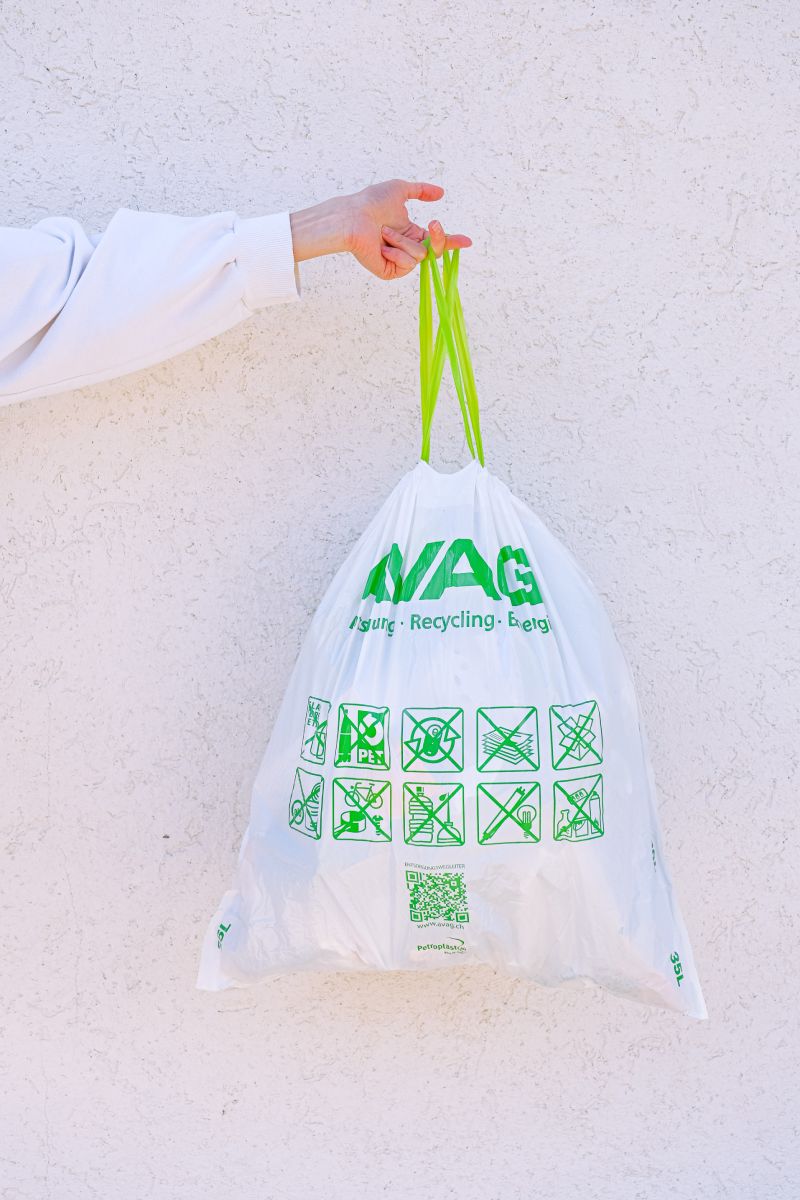
Understanding local recycling guidelines
Research your local recycling program
Familiarize yourself with the specific recycling guidelines in your area. Check your municipality’s website, contact local recycling centers, or consult recycling guides provided by waste management authorities. Understanding what can and cannot be recycled will prevent contamination and ensure your efforts are aligned with local recycling practices.
Know the accepted materials
Different recycling programs accept different materials. Typically, paper, cardboard, plastic bottles and containers, glass bottles and jars, and metal cans are recyclable. However, guidelines may vary, so be aware of specific rules regarding recycling numbers, caps, labels, and other factors.
Learn about recycling collection methods
Determine how recycling is collected in your area. It may involve curbside pickup, drop-off centers, or recycling stations. Familiarize yourself with collection schedules, container requirements, and any special instructions for preparing recyclables.
Sorting and preparing recyclable materials correctly
Clean and empty containers
Rinse out food and beverage containers to remove any residue. Empty them before placing them in the recycling bin. This helps prevent contamination and ensures that the recyclables can be processed effectively.
Remove non-recyclable components
Check for non-recyclable parts, such as plastic film, Styrofoam, or food-soiled materials. Separate and dispose of these items properly, as they can hinder the recycling process.
Sort recyclables into appropriate categories
Set up designated recycling bins or containers to sort different materials. Separate paper and cardboard from plastic, glass, and metal. Use separate containers for different types of plastics, following the guidelines provided by your local recycling program.
Flatten cardboard boxes
Flatten cardboard boxes to save space in your recycling bin and facilitate efficient collection and processing.
Follow instructions for unique items
Certain items, such as batteries, electronics, or hazardous materials, require special recycling methods. Research local resources or collection events for safely recycling these items, preventing environmental harm.
By understanding local recycling guidelines and properly sorting and preparing recyclable materials, we can maximize the impact of our recycling efforts.
Sustainable Shopping and Consumer Choices
As conscious consumers, our shopping choices have a significant impact on waste generation and environmental sustainability. By prioritizing secondhand and thrift shopping and opting for eco-friendly and sustainable products, we can actively contribute to the goal of zero waste living.

Prioritizing secondhand and thrift shopping
Explore thrift stores and consignment shops
Thrift stores and consignment shops offer a treasure trove of pre-loved items waiting to be discovered. By shopping at these establishments, we extend the lifespan of products and reduce the demand for new manufacturing, thereby minimizing waste and resource consumption.
Embrace online marketplaces and community platforms
Online marketplaces and community platforms provide convenient platforms for buying and selling secondhand items. Explore websites and apps dedicated to secondhand goods, where you can find a wide range of products, from clothing and furniture to electronics and appliances.
Attend clothing swaps and swap parties
Clothing swaps are a fun and sustainable way to refresh your wardrobe without contributing to the textile waste problem. Organize or participate in clothing swap events where friends, family, or community members can exchange clothes and accessories they no longer need.
Opting for eco-friendly and sustainable products
Research sustainable brands and certifications
Look for brands that prioritize sustainability, ethical practices, and environmental responsibility. Check for certifications like Fair Trade, Organic, or Forest Stewardship Council ( FSC) certification, which ensure that products meet specific sustainability standards.
Choose products with minimal packaging
Opt for products with minimal or plastic-free packaging to reduce waste. Look for alternatives like refillable or bulk options that minimize packaging waste and encourage reuse.
Prioritize durable and long-lasting products
Invest in high-quality, durable products that are built to last. Choose items made from sustainable materials and designed for longevity, reducing the need for frequent replacements and ultimately minimizing waste.
Consider the life cycle of products
Evaluate the environmental impact of products beyond their initial use. Look for items that are easily recyclable, made from recycled materials, or can be repurposed or composted at the end of their life cycle.
Reduce single-use items
Minimize the use of single-use items in your daily life by opting for reusable alternatives. Invest in reusable water bottles, coffee cups, shopping bags, and food storage containers to avoid disposable items and reduce waste.
By prioritizing secondhand and thrift shopping and opting for eco-friendly and sustainable products, we can make a positive impact on waste reduction and environmental conservation. Let’s be conscious consumers, supporting businesses that align with our values and promoting a more sustainable and circular economy.
Mindful Consumption Habits
In a world of abundance and constant consumerism, adopting mindful consumption habits is key to minimizing household waste and embracing a more sustainable lifestyle. By practicing mindful consumption and mindful decluttering, as well as embracing minimalism and conscious purchasing decisions, we can reduce our environmental footprint and contribute to the goal of zero waste living. In this section, we will explore practical tips for cultivating these mindful habits and making intentional choices that align with our values.

Practicing mindful consumption and mindful decluttering
Assess your needs versus wants
Before making a purchase, pause and reflect on whether the item is a genuine necessity or simply a fleeting desire. By distinguishing between needs and wants, we can avoid unnecessary purchases and reduce the accumulation of possessions that may eventually become waste.
Prioritize quality over quantity
Instead of seeking instant gratification through cheap and disposable items, prioritize quality over quantity. Invest in well-made, durable products that are built to last, even if they come with a higher price tag. By choosing quality items, we reduce the need for frequent replacements and contribute to a more sustainable and less wasteful lifestyle.
Mindful decluttering
Regularly declutter your living space with a mindful approach. Assess each item’s purpose, sentimental value, and usefulness in your life. Consider donating, repurposing, or responsibly recycling items that no longer serve a purpose to minimize waste and promote a clutter-free environment.
Embracing minimalism and conscious purchasing decisions
Simplify your possessions
Embrace the principles of minimalism by intentionally simplifying your belongings. Focus on quality essentials and items that bring you joy and purpose. By reducing the excess, you create more space, reduce the need for storage, and cultivate a sense of contentment and fulfillment.
Mindful purchasing decisions
Before making a purchase, ask yourself important questions. Is the product ethically produced? Is it made from sustainable materials? Does it align with your values and support responsible manufacturing practices? By making conscious purchasing decisions, we support businesses that prioritize sustainability and contribute to a more sustainable economy.
Borrow, share, and swap
Instead of buying items for occasional use, explore borrowing, sharing, or swapping arrangements with friends, family, or local communities. This reduces the need for each individual to own every item and promotes a culture of sharing and resourcefulness.
Focus on experiences over material possessions
Shift your focus from accumulating material possessions to investing in experiences and creating memories. Engage in activities that bring joy, fulfillment, and personal growth, rather than relying on material possessions for happiness.
By practicing mindful consumption and mindful decluttering, as well as embracing minimalism and conscious purchasing decisions, we can lead a more intentional and sustainable lifestyle. Let’s redefine our relationship with material possessions and prioritize experiences, quality, and purpose.
Spreading Awareness and Encouraging Others
As advocates of zero waste living, it’s not only important for us to adopt sustainable practices ourselves but also to inspire and encourage others to join the movement. By sharing zero waste tips and experiences, as well as engaging in community initiatives and events, we can create a ripple effect of positive change and contribute to a more sustainable future.
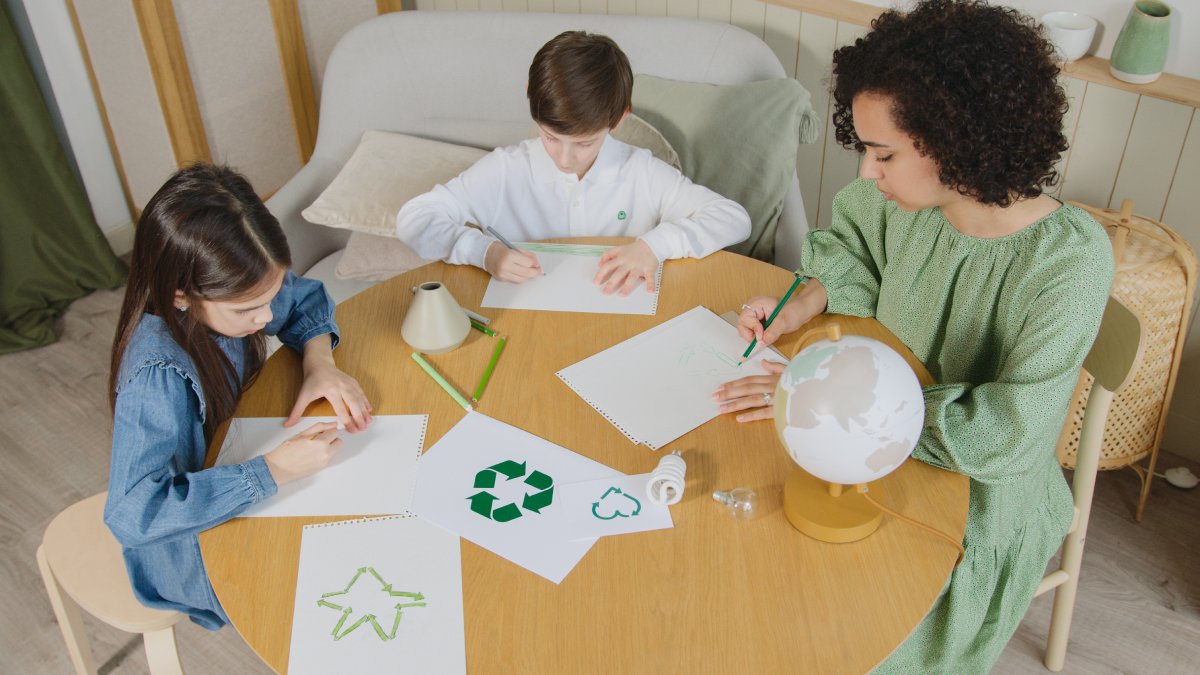
Sharing zero waste tips and experiences
Utilize social media platforms
Leverage the power of social media to share your zero waste journey, tips, and experiences. Create engaging content, such as blog posts, videos, or infographics, highlighting practical steps and showcasing the benefits of adopting a zero waste lifestyle. Encourage your followers to share their own experiences and provide a platform for discussion and knowledge-sharing.
Collaborate with influencers and organizations
Connect with like-minded influencers and organizations who are passionate about sustainability. Collaborate on joint initiatives, guest blog posts, or social media takeovers to reach a wider audience and amplify the message of zero waste living.
Host workshops and webinars
Organize workshops or webinars in your community to share practical tips and strategies for minimizing household waste. Cover topics such as composting, sustainable shopping, and reducing single-use plastics. Provide attendees with actionable steps they can implement in their daily lives and encourage them to share the knowledge with others.
Engaging in community initiatives and events
Join or initiate zero waste groups
Seek out local zero waste or sustainability-focused groups in your community. Participate in their activities, attend meetings, and contribute your knowledge and experiences. If such a group doesn’t exist, consider initiating one to bring together like-minded individuals who are passionate about reducing waste.
Volunteer for environmental organizations
Get involved with environmental organizations that focus on waste reduction and sustainability. Volunteer your time and skills to support their initiatives, such as beach cleanups, recycling drives, or educational campaigns. By actively participating, you contribute to the collective effort of creating a more sustainable world.
Organize community events
Plan and host community events centered around waste reduction and sustainability. This could include clothing swaps, repair cafes, or zero waste fairs. These events provide opportunities for individuals to learn, connect, and take actionable steps towards a zero waste lifestyle.
Educate schools and local businesses
Approach schools and local businesses to deliver presentations or workshops on the importance of waste reduction and practical tips for implementing sustainable practices. By educating the younger generation and influencing businesses, we can create a long-lasting impact on reducing waste in our communities.
By sharing our zero waste tips and experiences and actively engaging in community initiatives and events, we become catalysts for change. Let’s inspire others to embark on their own zero waste journey, and together, we can make a significant difference in minimizing household waste and creating a more sustainable future.
Conclusion
In this comprehensive guide, we have explored the practical tips and strategies for minimizing household waste and embracing a zero waste lifestyle. By adopting these practices, we can significantly reduce our environmental footprint and contribute to a more sustainable future. Let’s take a moment to recap the importance of zero waste living and encourage you to implement these tips, making a positive impact on both the environment and your daily life.
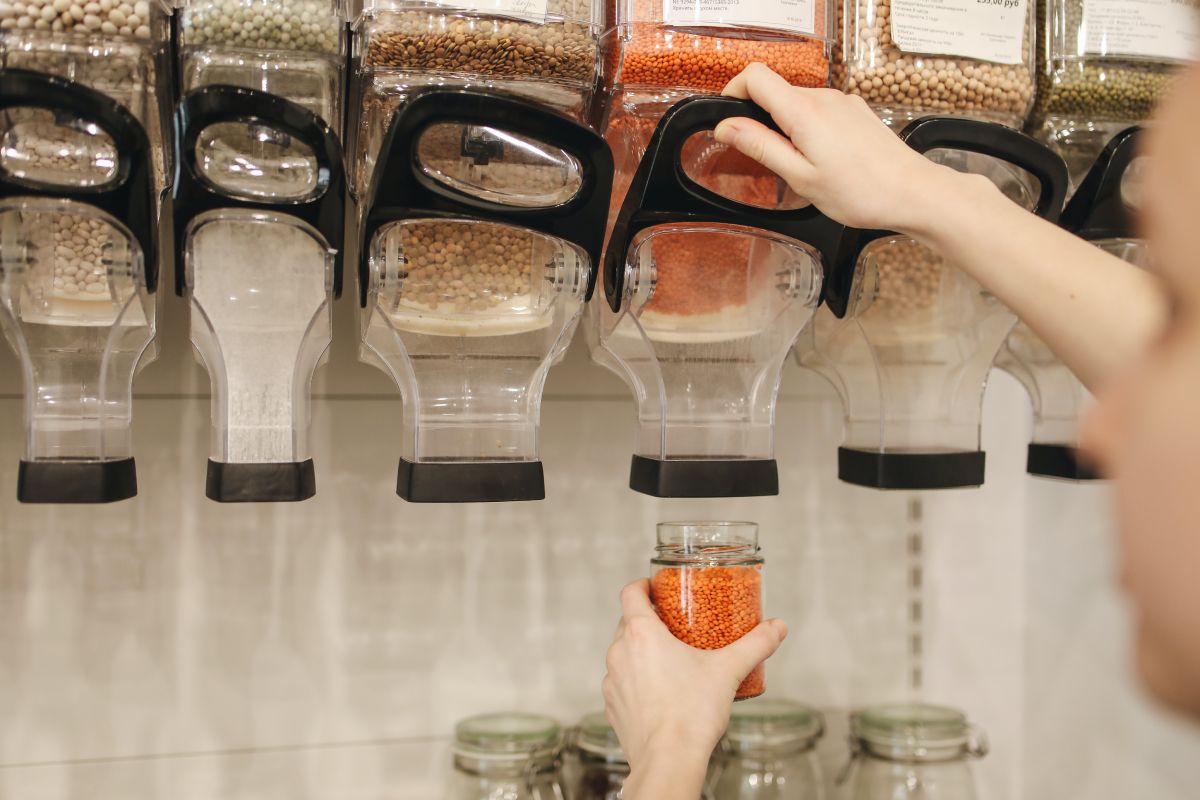
Zero waste living is crucial for several reasons. First and foremost, it helps conserve our planet’s precious resources by minimizing the extraction and production of new materials. By reducing waste, we also decrease the amount of waste that ends up in landfills, thus mitigating environmental pollution and greenhouse gas emissions. Additionally, zero waste living encourages a more mindful and conscious approach to consumption, promoting a shift from a throwaway culture to a circular economy.
Now that you are equipped with practical tips and strategies, it’s time to take action and make a positive impact. Start by conducting a waste audit to assess your current waste generation and identify areas of improvement. Set up a composting system to reduce food waste, and make use of meal planning and storage techniques to prevent food from going to waste. Understand and follow local recycling guidelines to ensure proper sorting and preparation of recyclable materials. Prioritize secondhand and thrift shopping, and opt for eco-friendly and sustainable products. Practice mindful consumption and decluttering, embracing minimalism and conscious purchasing decisions. Lastly, spread awareness and encourage others to join the zero waste movement by sharing your experiences and engaging in community initiatives.
By implementing these practical tips, you become an agent of change in your own life and inspire others to follow suit. Embrace zero waste living and embark on this transformative journey today.






